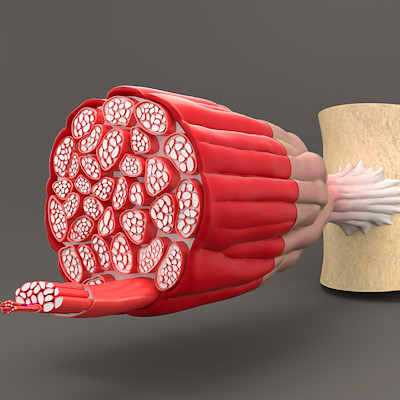February 21, 2023 -- National Institutes of Health (NIH) researchers and collaborators have found that DUX4, a toxic protein made by the body, may be responsible for two very different rare genetic disorders. The study, published on Friday in Science Advances, may eventually lead to therapies that can help people with a type of muscular dystrophy, as well as those with a facial malformation called congenital arhinia.
Arhinia prevents the development of an external human nose, along with the associated olfactory bulbs and tracts. Fewer than 100 cases of this extremely rare disorder have been reported in the past century.
Facioscapulohumeral muscular dystrophy, called FSHD type 2 or FSHD2, is an also rare, inherited form of muscular dystrophy that causes progressive muscle weakness. FSHD2 patients exhibit an overproduction of the toxic protein DUX4 which kills the muscle cells, leading to the progressive weakening of the muscles.
While it was previously known that DUX4 damages muscle cells in patients with FSHD2, the fact that it can also kill the precursors of the human nose was a new finding.
The team assembled an international cohort of 40 arhinia patients and 55 family members and, through exome sequencing, determined that 86% of patients had an extremely rare, heterozygous missense mutation in the gene SMCHD1.
They found that the combination of the mutated SMCHD1 gene and an environmental modifier such as a virus may trigger the DUX4 and cause arhinia to occur. The identification of SMCHD1 as the major genetic driver of arhinia was unexpected because mutations in SMCHD1 were previously shown to cause FSHD2, which has no associated frontonasal dysmorphia or olfactory deficits.
Using stem cells created from patients with the two diseases, the researchers conducted studies on cranial placode cells -- the cells that lead to the development of the body's sensory organs, including the nose. As the placode cells started to form, they began to produce the DUX4 protein which caused cell death.
The researchers demonstrated that DUX4 is responsible for cell death in placode cells, as it is in muscle cells. However, although both diseases are now known to be caused by mutations in the SMCHD1 gene, the reasons why nose cells do not die in muscular dystrophy or why muscle cells do not die in arhinia both remain unclear.
"Now what we have to do is try to figure out the players acting downstream of DUX4, so we can block it from damaging the muscle cells or the nose precursors and hopefully find some new treatment options for patients suffering from these rare diseases," lead author Dr. Natalie Shaw, head of the Pediatric Neuroendocrinology Group at NIH's National Institute of Environmental Health Sciences, said in a statement.
Copyright © 2023 scienceboard.net









